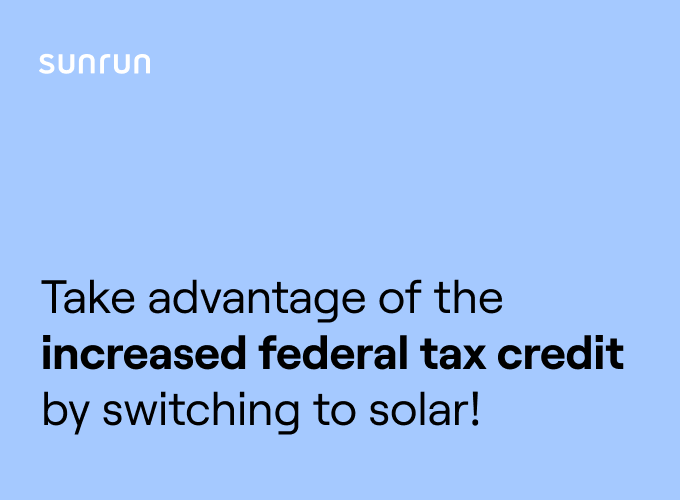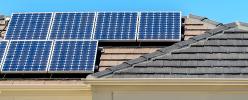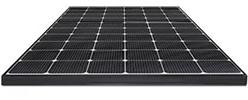How Does Home Solar Battery Storage Work?

If you’re thinking of going solar, you need to be thinking of storage. If you invest in a solar system to energize your home - why not collect and store all the power that you generate? Save and use this power for another time, when you need it the most.
Solar batteries offer you big control and a big opportunity for increased savings, powering your home during a blackout, and reducing the negative effects of climate change.1
There is a strong future for battery storage across America.2 The solar industry has been at the forefront of this migration to high-tech stored energy, and Sunrun has been there from the very beginning.
Homeowners Turn to Solar Batteries During Blackouts and Outages
Power outages are all-too-frequent these days due to an aging grid system that will take years to fix and billions of dollars to upgrade.3 As a result, more and more homeowners are turning to renewable technologies as a way to keep their homes powered during fierce weather conditions.
Solar customers also understand that a battery can be used when electricity prices are higher during certain times of the day - resulting in significant savings. Or simply use the battery when the sun goes down every night instead of pulling power from the utility grid.
Going solar is an investment for your future, and most potential solar customers have a lot of questions. The most popular is… how does a solar energy system work? We’ve provided a snapshot below.


See if you qualify for the
26% federal tax credit
Thanks so much! We'll call you shortly.
Sorry, we are not taking new customers in your area yet
Refer a friend. Get $1000
Our Electricity Grid
Our electricity grid is considered one of the most amazing engineering feats of the 20th century. And it’s huge.4 This network of power plants, substations, transformers, wires, sensors and poles carry electricity to your home - sometimes hundreds of miles - to keep your house powered up.
But the grid is old. Parts of the network are over a century old. While our government works on updating the grid, homeowners can work now to reduce their carbon footprint with the newest renewable energy technology - and save money - by going solar with battery storage.
Main Distribution Panel or Service Panel
The grid provides power through a set of wires connected to your distribution panel. (You’ve seen it. It’s the metal box with circuit switches usually found in your basement or garage.)
Your local utility provides electricity to your house through this panel. The panel then distributes electricity to various parts of your house via the individual circuits.5
Your Solar Battery
Your solar battery gets charged from your solar panels and acts like a cushion between your distribution panel and your household. When a power outage occurs, your solar battery turns on and disconnects from the distribution panel. (This is for safety purposes. Solar panels are shut off during a power outage by your utility to remove electrocution hazards to their workers.)
The solar battery is installed near your distribution panel. It is then rewired to a “critical loads panel.” (You get to specify the rooms or appliances that are critical to you and your family.) During a power outage or blackout your battery discharges power and your house continues to hum, the way you want.
More Solar Battery Savings with Time-of-Use Rates
You can also save more money by using stored battery energy when utility companies charge the most during the day. For those states that have time-of-use rates (TOU) your battery powers up so you can wash clothes, recharge digital devices, cook dinner or turn the patio lights on when you want. (And not pay a dime more.) Get more details on TOU rates.
Critical Loads Panel and Battery Backup Work Together
When you decide what appliances or lighting you need during a blackout, a critical loads panel is separated out from your distribution panel. During a blackout, your main distribution panel will shut down, but your critical loads panel will power continuously during a power outage.6
Your battery backup system is also meant to cover critical loads like your fridge, freezer, furnace, water pressure, lighting, security system and air conditioning. If your local utility should fail, your solar battery and inverter will isolate themselves and continue to supply power to your home.7
Your Solar Panels
You’ve seen the solar panels on your neighbor’s roofs. Solar panels are made up of photovoltaic cells, or PVs. When sunlight hits the solar panel, the PV cells start producing electricity.
Solar panels produces direct current (DC) energy. But our homes run on alternating current (AC) energy. So a solar inverter is required to convert the DC electricity into appliance-friendly AC electricity to power your home. (During initial consultations with you, Sunrun’s solar technicians will determine how many solar panels you’ll need to power up your home.)
Inverter
Appliances and gadgets in your house typically run on AC electricity, or alternating current. An inverter connected to your solar panels turns the DC power into AC power to keep your house running.
Some home batteries include a dedicated inverter to convert DC electricity from the battery into AC electricity for use in the home. Some solar panels, as mentioned above, come with an inverter already installed on the back. Get more details on DC/AC power and how it works.
Meter
When solar panels are installed, a new utility meter is usually installed. Some solar owners may keep their traditional utility meter and have a second, newer one installed to the house. Basically these meters show how much power you are consuming, and how much solar you are producing. Generally, what type of meter you get depends on where you live, your utility company and your solar system.8
Sunrun typically installs a new meter. This allows us to monitor your system’s solar power production, catch any potential problems, and repair them - usually before you even notice there’s an issue.
Sunrun Brightbox™ Keeps You Powered Up When Things Go Dark
With a backup storage battery like Sunrun’s lithium-ion battery, your lights stay on and your appliances keep running during harsh weather conditions, outages, blackouts or simply when the sun goes down.
Generate, store and manage your own clean affordable solar energy with Brightbox. Join thousands of Americans who have gone solar with Sunrun. Get your free solar quote today.
David Zeledon
Sources:
1. https://ensia.com/infographics/battery-technology/
2. https://blogs.scientificamerican.com/plugged-in/beyond-the-hype-what-s-t...
3. https://emp.lbl.gov/sites/default/files/lbnl-188741.pdf
4. https://www.energy.gov/articles/infographic-understanding-grid
5. https://www.nachi.org/home-depot-service-panel.htm
6. https://www.wholesalesolar.com/blog/add-backup-power-gridtie-system/
7. https://www.solarpowerworldonline.com/2014/05/basics-battery-back-solar/
8. https://newenglandcleanenergy.com/energymiser/2017/02/15/different-types...
Recommended Articles
-

The Pros and Cons of Going Solar
When it comes to any major change in life, it’s usually best to take some time and carefully...
-

Is My Roof Good for Solar?
Find Out Which Roof Types Are Ideal for Solar Panels Today It's time to consider...
-

3 Things You Need to Know When Buying Solar Panels
Sunrun Makes Solar Simple You’ve heard that the price of renewable energy continues to...
-

Power Your Electric Vehicle with Solar Energy & Battery Storage
What powers your electric vehicle? Electricity. Most EV owners are powering up their cars by...